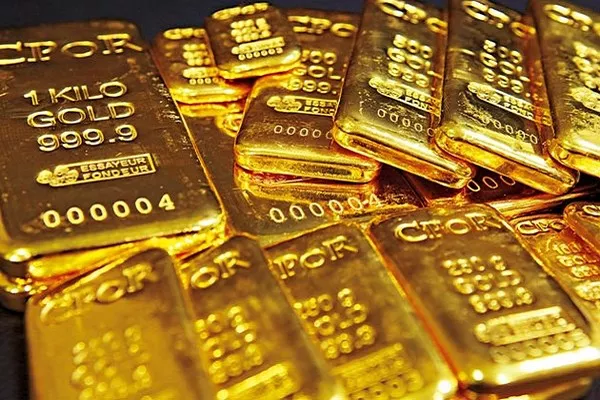The price of gold serves as a critical indicator of economic health and investor sentiment. In 1974, gold witnessed a dramatic increase in value, reflecting significant economic turmoil and geopolitical events. This article explores the factors influencing gold prices during this pivotal year, providing a thorough analysis of market trends, investor behavior, and historical context. Understanding the dynamics of gold prices in 1974 can offer valuable insights for modern investors and economists.
Historical Background
To comprehend the price of gold in 1974, it’s essential to analyze the preceding economic and political events:
The End of the Gold Standard: In 1971, President Nixon’s decision to suspend the dollar’s convertibility into gold marked a fundamental shift in monetary policy. Discuss the implications of this change on international markets and how it set the stage for gold’s price volatility.
Economic Challenges of the Early 1970s: The decade began with economic uncertainty, including rising unemployment and sluggish growth. Explore the causes of this economic malaise, including the aftermath of the Vietnam War and its impact on fiscal policies.
Inflation Trends: By 1974, inflation rates reached alarming levels, often exceeding 11%. Analyze how inflation eroded purchasing power and drove investors toward gold as a hedge against currency devaluation.
Global Context: Situate the U.S. economy within a global framework, discussing how events in other countries influenced gold prices, including the devaluation of currencies and shifts in trade policies.
Gold Price Trends in 1974
In 1974, gold’s price fluctuated significantly, averaging around $160 per ounce:
Detailed Monthly Breakdown: Provide a comprehensive analysis of gold prices on a monthly basis, starting from January to December. Include specific price points, fluctuations, and the key events that drove these changes.
January to March: Gold began at approximately $125, influenced by early inflationary pressures and speculative buying.
April to June: Discuss the impact of the Yom Kippur War, rising oil prices, and their correlation to gold’s price spikes during this period.
July to September: Analyze market reactions to changing U.S. economic policies, including any interventions by the Federal Reserve.
October to December: Explore the final quarter of the year, discussing how geopolitical events and domestic policies shaped gold’s year-end price.
Graphs and Data Visualizations: Incorporate charts that illustrate price trends and significant spikes, providing visual context for the fluctuations discussed.
Key Influencing Factors
A myriad of factors contributed to gold’s price dynamics in 1974:
Inflation and Economic Policies: Explore how inflation affected consumer behavior and investment patterns. Use data to illustrate the relationship between inflation rates and gold demand.
Geopolitical Events: Delve deeper into the Yom Kippur War and the 1973 oil crisis. Discuss how these events created a climate of uncertainty, driving investors to seek refuge in gold.
Monetary Policy Changes: Analyze the role of the Federal Reserve’s policies during this period. Discuss the impacts of interest rate changes on gold prices and investor decisions.
Speculation in Commodities Markets: Examine how speculative trading in commodities, particularly gold, influenced price volatility. Include examples of major market players and their impact on gold prices.
Investor Behavior and Market Psychology: Discuss the psychological factors influencing investor decisions, including fear of economic instability and a desire for security.
Comparative Analysis
To fully grasp the significance of gold prices in 1974, it’s essential to compare them with those of surrounding years:
Historical Price Comparison: Analyze gold prices from 1970 to 1974, illustrating the dramatic rise. Include specific figures and highlight the percentage increases.
Market Conditions: Compare the economic environment of the early 1970s with that of the late 1960s and early 1980s. Discuss how shifts in economic policies and global events shaped the gold market.
Impact on Future Gold Prices: Consider how the trends of 1974 laid the groundwork for future price movements in subsequent decades, leading to the gold market’s evolution.
Impact on Investors
The significant rise in gold prices in 1974 had profound implications for investors:
Investment Strategies: Explore how the spike in gold prices led to changes in investment strategies. Discuss the appeal of gold as a hedge against inflation and economic uncertainty.
Institutional vs. Individual Investors: Examine how different types of investors responded to rising gold prices, including institutional investors, hedge funds, and individual savers.
Long-Term Effects on Investment Trends: Analyze how the events of 1974 influenced long-term investment trends in commodities, particularly gold, in the late 20th century.
Conclusion
The price of gold in 1974 serves as a significant case study in the dynamics of economic factors, investor behavior, and geopolitical influences. By examining the complexities of this period, we gain valuable insights into the ongoing relevance of gold as an investment. This conclusion will reiterate the key findings of the article and encourage readers to consider historical trends when analyzing current market conditions.
Related topics:
What is Gold Price in UK Today(October 23)
What is the Price of Gold in India Today (October 23)
What is the Price of Gold Today per Ounce(October 23)


